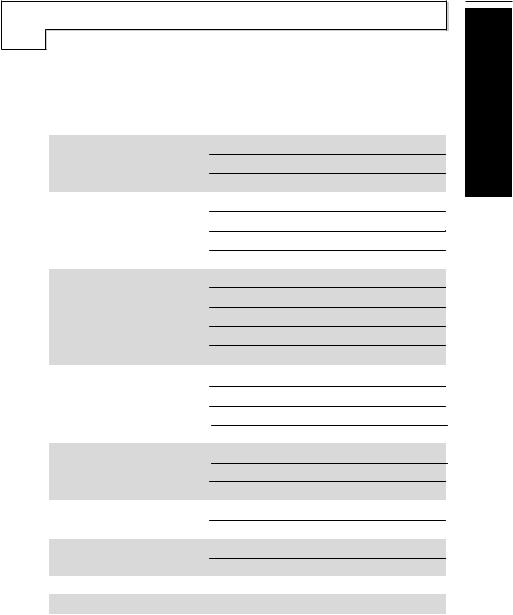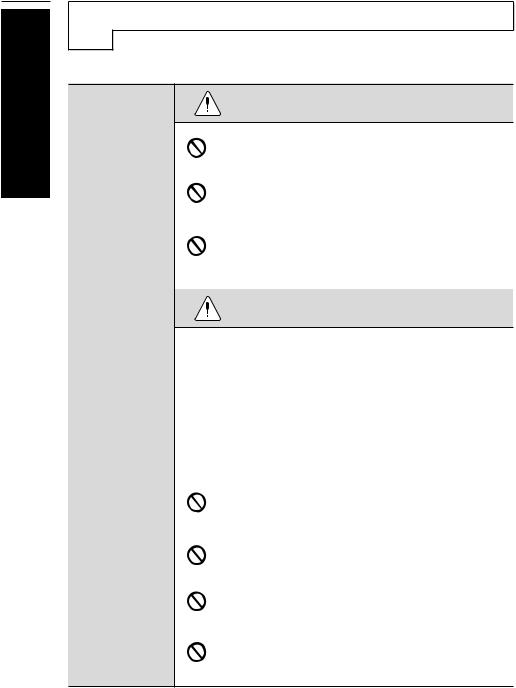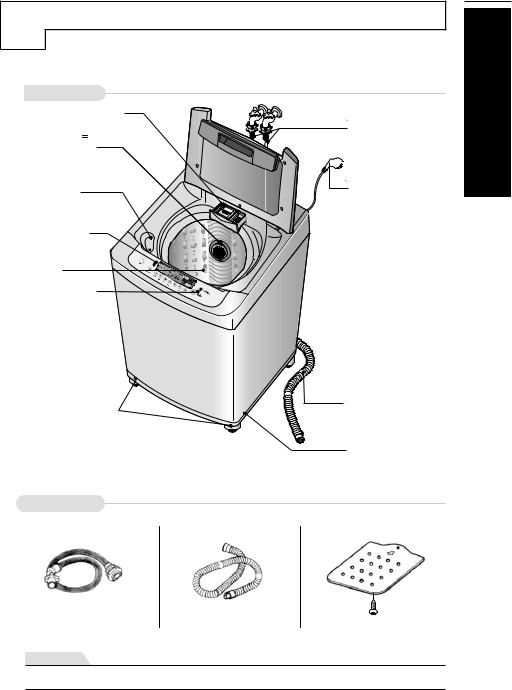LG WF-T7519SG Owner’s Manual

INDIA'S 
N o.1 
WASHING MACHINE*
MTNL / BSNL (Toll Free)
Prefix STD Code
Owner's Manual
Please read this manual carefully and thoroughly before operating this unit.
Record model name and serial number of the set. Quote this information to your dealer when you require service.
MODEL :WF-T7519RS
WF-T7519RW
W A S H I N G M A C H I N E S

2
<![if ! IE]><![endif]>Product Features
Product Features
Washer doesn't operate while the lid is open. If the lid is open during the wash, rinse or spin cycles, the operation stops for safety.
FUZZY logic control
•A built-in load sensor automatically detects the laundry load and a microprocessor optimizes washing conditions such as ideal WATER LEVEL and washing time.
START |
SENSING |
SETTING |
WASHING |
AUTO |
LaundrySensor |
Optimum |
POWER |
||
|
WaterLevelSensor |
Washing |
|
OFF |
|
|
Condition |
|
•Advanced technology is built into the Electronic Control System which ensures the best washing result.
Turbo drum washing
• When "Punch + 3" washing wings turn, the washing tub  turns in the opposite direction. This makes the both
turns in the opposite direction. This makes the both  sides current of water which improve wash-performance
sides current of water which improve wash-performance 
by rubbing clothes strongly.
3 Step washing
• 3 step washing makes the best washing performance with low tangling.
Rubbing |
Rubbing and |
Shaking and |
|
Shaking |
Disentangling |
NOTE :Besuretoremovetheunitfrom thecartonbase,otherwisethe
machinewilnotbeabletooperateproperly.

ContentsREAD THIS MANUAL
Inside you will find many helpful hints on how to use and maintain your washer properly. Just a little preventive care on your part can save you a great deal of time and money over the life of your washer.You will find many answers to common problems in the Troubleshooting section. If you review our chart of Troubleshooting Tips first, you may not need to call for service at all.
Introduction
Before Starting to Wash
Washing Programs
Additional Function
Program
Installation
Care and Maintenance
Troubleshooting
Specification
Installation Check Sheet
Terms of Warranty
Safety Information |
4 |
Identification of Parts |
7 |
Function Information |
8 |
Preparation Before Washing |
9 |
Use of Water, Detergent, Bleach and Softener |
10 |
Special Guide for Stain Removal |
13 |
Function of each Button |
14 |
FUZZY Wash (Normal Wash) |
16 |
WOOL Wash |
16 |
QUICK WASH |
16 |
JEANS Wash |
16 |
SOAK Wash |
18 |
AIR DRY |
19 |
Option Washing |
20 |
DELAY START (RESERVATION) Wash |
21 |
Other Useful Functions |
22 |
Placing and Leveling |
23 |
Connecting Water Supply Hose |
24 |
Connecting Drain Hose |
25 |
Grounding Method |
26 |
Cleaning and Maintenance |
27 |
Common washing problems |
29 |
Troubleshooting |
30 |
Specification |
31 |
Installation Check Sheet |
|
Terms of Warranty |
|
3
<![if ! IE]><![endif]>Contents

4
<![if ! IE]><![endif]>Introduction
Safety Information
Read carefully and thoroughly through this booklet as it contains important safety information that will protect the user from unexpected dangers and prevent potential damages to the product.
This booklet is divided into 2 parts : Warning and Caution.
:This is a warning sign specifying user’s applications which might be dangerous.
:This is a sign specifying ‘Strictly Forbidden’ applications.
Warning : Failure to comply with the instructions under this sign may result in major physical injuries or death.
Caution : Failure to comply with the instructions under this sign may result in minor physical injuries or damages to the product.
WATER |
Warning |
|
HEATER |
||
|
||
SAFETY |
|
•Under certain conditions hydrogen gas may be produced in a water heater that has not been used for two weeks or more. Hydrogen gas can be explosive under these circumstances.
If the HOT water has not been used for two weeks or more, preve nt the possibility of damage or injury by turning on all Hot water faucets and allowing them to run for several minutes. Do this before using any electrical appliance which is connected to the HOT water system. This simple procedure will allow any built-up hyd rogen gas to escape. Since the gas is flammable, do not smoke or use an open flame or appliance during this process.
PROPER |
Caution |
|
INSTALLATION |
||
|
•The base opening must not be obstructed by carpeting when the washing machine is installed on a carpeted floor.
•Install or store where it will not be exposed to temperatures below freezing or exposed to the weather.
Iftheproductisexposedtosuchconditions,electricshock,fire,breakdownor deformationmayoccur.
•Properly ground washer to conform with all governing codes and ordinances. Follow details in Installation Instructions.
Ifnotgroundedproperly,breakdownandleakageofelectricitymayoccur,whichmay causeelectricshock.
•Must be positioned so that the plug is accessible.
Iftheplugisplacedbetweenthewalandthemachine,itmaygetdamaged,possibly causingfireorelectricshock.
•Make sure the plug is completely pushed into the outlet.
Failuretodosomaycauseelectricshockandfireduetooverheating.

Safety Information
YOUR |
Warning |
|
LAUNDRY |
||
|
||
AREA |
• Keep the area underneath and around your appliances free of combustible |
|
|
||
|
materials such as lint, paper, rags, chemical, etc. |
Operatingwithsuchmaterialsaroundthemachinemaytrigger explosionorfire.
•Close supervision is necessary if this appliance is used by or near children. Do not allow children to play on, with, or inside this or any other appliance.
Thereispotentialdangerthatchildrenmightdrowninthetub.
Do not touch the power plug with a wet hand.
Itwilcauseelectricshock
Do not put your hand, foot or anything under the washing machine while the washing machine is in operation.
Thereisarotatingmechanismunderthemachine,soyoucouldbeinjured.
WHEN USING |
Caution |
|
THE WASHER |
||
|
•Use this appliance only for its intended purpose as described in this Owner’s Manual.
•The laundry process can reduce the flame retardancy of fabrics. To avoid such a result, carefully follow the garment manufacturer’s wash and care instr uctions.
•To minimize the possibility of electric shock, unplug this appliance from the power supply or disconnect the washer at the household distribution panel by removing the fuse or switching off the circuit breaker before attempting any maintenance or cleaning.
NOTE : Pressing Power button to turn off does NOT
disconnect the appliance from the power supply.
•Make sure that drainage is working properly.
Ifwaterisnotdrainedproperly,yourfloormaygetflooded.Floodedfloors mayinduceelectricityleakage,furtherresultinginelectricshockorfire.
•If, during spinning, opening the lid does not stop the tub within about 15 seconds, immediately discontinue operating the machine.
Calforrepair.Amachinethatspinswithitsdooropenmaycauseinjuries.
Never reach into washer while it is moving.
Wait until the machine has completely stopped before opening the lid.
Evenslowrotationcancauseinjury.
Never attempt to operate this appliance if it is damaged, malfunctioning, partially disassembled, or has missing or broken parts, including a damaged cord or plug.
Operatingwithadamagedplugmaycauseelectricshock.
Do not use water hotter than 60°C.
Useofexcessivelyhotwatermaycausedamagetofabricsorcause leakageofwater.
5
<![if ! IE]><![endif]>Intoduction

6
<![if ! IE]><![endif]>Introduction
Safety Information
WHEN USING |
Warning |
|
THE WASHER |
||
|
Do not use a plug socket and wiring equipment for more than their rated capacity.
Exceedingthelimitmayleadtoelectricshock,fire,breakdown,and/or deformationofparts.
Do not mix chlorine bleach with ammonia or acids such as vinegar and/or rust remover.
Mixingdiferentchemicalscanproducetoxicgaseswhichmaycausedeath.
Do not wash or dry articles that have been cleaned in, washed in, soaked in, or spotted with combustible or explosive substances (such as wax, oil, paint, gasoline, drycleaning solvents, kerosene, etc). Do not add these substances to the wash water.
Do not use or place these substances around your washer or dryer during operation.
|
Itmayigniteorexplode. |
|
|
|
|
WHEN NOT |
Caution |
|
IN USE |
||
|
•Turn off water faucets to relieve pressure on hoses and valve s and to minimize leakage if a break or rupture should occur. Check the condition of the fill hoses; they may need replacement after 5years.
•When the air temperature is high and the water temperature is low, condensation may occur and thus wet the floor.
•Wipe off dirt or dust on the contacts of the power plug.
Usinguncleanpowerplugmaycausefire.
•Before discarding a washer, or removing it from service, remove the washer lid to prevent children from hiding inside.
Childrenmaybetrappedandsufocatedifthelidisleftintact.
Do not attempt to repair or replace any part of this appliance unless specifically recommended in this Owner’s Manual, or in published user-repair instructions that you understand and have the skills to carry out.
Operatingthemachinewithimproperlyreplacedpartsmaybea causeforfireorelectricshock.
Do not tamper with controls.
Itmayleadtoelectricshock,fire,breakdown,deformation.
Do not yank the power cord in an attempt to disconnect the powe r plug. Securely hold the power plug to unplug the machine.
Failuretoobservetheseinstructionsmaycauseelectricshockorfire duetoshort-circuit.
When you are cleaning the washing machine, do not apply water directly to any part of the washing machine.
Itwilcauseshortcircuitandelectricshock.

Identification of Parts
Body
POWDER DETERGENT
Box for delayed washing. 



MAGIC FILTER
Clean regularly to
stop linting on the
clothes load.
BLEACH
DISPENSER 


FUNCTION
SELECTOR
TUB
START/PAUSE
BUTTON
Use to start or
stop the washing
machine
temporarily.
ADJUSTABLE LEGS
Use to level the washing machine for correct balance & spin operation.
WATER SUPPLY
HOSE
Make sure the
water does not  leak.
leak.
POWER PLUG
If the supply cord is damaged, it must be replaced by the manufacturer or its service agents or similarly qualified person in order to avoid a hazard.

 CASTORS
CASTORS
Use for easy
translocation
DRAIN HOSE
Keep the drain hose
flipped down while
washing is in progress.
BASE
(2 adjustable legs are optional, some models have provision for 1 adjustable leg)
Accessories
Water supply hoses |
Drain hose |
Anti-rat cover |
Screw
NOTE
"*" Parts can be different according to the model.
7
<![if ! IE]><![endif]>Introduction

8
<![if ! IE]><![endif]>Introduction
Function Information
Our machine provides various washing methods which suits various conditions and types of laundry.
Different types of laundry washing
FUZZY(Normal) Wash
Use this Program for everyday washing e.g. sheets, towels, T-shirts. (refer to page 16)
JEANS Wash
Use this Program for heavily soiled durable garments e.g. overalls, jeans.
Thick and heavy clothes or those which are excessively dirty like jeans or working uniforms can be washed.(refer to page 16)
WOOL Wash
Wool clothes (lingerie, wool, etc.) which may be easily damaged can be washed. (refer to page 16)
The fibers of machine washable woolens have been specifically modified to prevent felting when they are machine washed. Most handknitted garments are not made of machine washable wool and we recommend that you hand wash them
•Before washing your woolens check the care label for the washing instructions.
•When washing woolens use a mild Detergent recommended for washing wool.
•Hand washed woolens may be spun in a washing machine to reduce the time they take to dry.
•To dry woolens lay down them flat on a towel and pat into shape. Dry woolens out of direct sunlight.
(The heat and tumble action of a dryer may cause shrinkage or felting of woolen garments.)
Some wool underlays and sheepskin products can be washed in a washing machine but may cause pump blockages. (Ensure that the whole article is suitable for machine washing and not just the backing material.)
You may wish to handwash these articles and place them in the machine to spin dry.
Washing according to the condition of laundry
QUICK WASH
QUICK WASH can be selected to wash lightly soiled clothes of less than 2.0 kg in a short time. (refer to page 16)
SOAK Wash
SOAK Wash can be selected to wash heavily soiled laundry by soaking in water for some time to remove dirt and grime. (refer to page 18)
Other washing method
DELAY START Wash
DELAY START Wash is used to delay the finishing time of the operation.
The number of hours to be delayed can be set by the user accordingly. (refer to page 21)
OPTION WASH
When the user needs only SPIN, RINSE/SPIN, RINSE, WASH/RINSE, WASH, WASH/RINSE/SPIN, SOAK/WASH/RINSE/SPIN. (refer to page 20)

Preparation Before Washing
Care Labels
* Look for a care label on your clothes. This will tell you about the fabric content of your garment and how it should be washed.
Sort clothes into loads that can be washed with the same wash cycle, Water Temperature and spin speed.
Sorting
To get the best results, different fabrics need to be washed in different ways.
• SOIL(Heavy, Normal, Light) |
Separate clothes according to the type and amount of soil. |
• COLOR(Whites, Lights, Darks) |
Separate white fabrics from colored fabrics. |
• LINT(Lint producers, Collectors) |
Separate lint producers and lint collectors. |
Lint Producers |
Terry cloth, Chenille, Towels, Nappies, Diapers |
Lint Collectors |
Synthetics, Corduroy, Permanent Press, Socks |
Check before Loading
• Checkalpocketstomakesurethattheyareempty. Things such as nails, hairclips, matches, |
|
pens, coins, and keys can damage both your washer and your clothes. |
|
• Mendanytorngarmentsorloosebutons. Tears or holes may become larger during washing. |
|
• Remove belts, underwires, etc. to prevent damage to the machine or your clothes. |
|
• Pretreatanydirtandstains. |
|
• Make sure the clothes are washable in water. |
WIRE |
•Check the washing instructions.
•Remove tissue in pockets.
Pretreatment on stains or heavy soil
•Pretreat shirt collars and cuffs with a pre-wash product or liquid Detergent when placing them in the washer. Before washing treat special stains with bar soaps, liquid Detergent or a paste of water and granular Detergent.
•Use a pretreat soil and stain remover.
Treat stains AS SOON AS POSSIBLE. The longer they are left the harder they are to remove.
(For more detail refer to page13)
Loading
Do not wash fabrics containing flammable materials (waxes, cleaning fluids, etc.).
LoadSize
The WATER LEVEL should just cover the clothes. Adjust the load size accordingly. Loosely load clothes no higher than the top row of holes in the washer tub. To add items after washer has started, press Start button and submerge additional items. Close the lid and press Start button again to restart.
LightandLarge-sizedclothing
 WARNI NG
WARNI NG
Fire Hazard
Neverplaceitemsinthewasherthatare dampenedwithgasolineorotherflammable fluids. Nowashercancompletelyremoveoil. Donotdryanythingthathaseverhadanytype ofoilonit(includingcookingoils). Doingsocanresultindeath,explosion,orfire.
Clothes like downs and woollens are light weight, large and float easily. Use a nylon net and wash them in a small amount of water. If the laundry floats during the wash cycle, it may become damaged. Use dissolved Detergent to prevent the Detergent from clumping.
Longlaundryitems
Use nylon nets for long, DELICATE items. For laundry with long strings or long length , a net will prevent 





 tangling during washing. Fastenzippers,hook,andstringsto make sure that these items don't snag on other clothes.
tangling during washing. Fastenzippers,hook,andstringsto make sure that these items don't snag on other clothes. 




 Nylon net is not supplied by LG.
Nylon net is not supplied by LG.
9
<![if ! IE]><![endif]>Wash to Starting Before

10
<![if ! IE]><![endif]>Before Starting to Wash
Use of Water, Detergent, Bleach and Softener
Using Water
Amount of WATER LEVEL
• This machine detects the quantity of laundry automatically, then sets the WATER LEVEL and proper amount of Detergent.
•When you select a wash program, the WATER LEVEL will be shown on the control panel.
•The following table shows the amount of water.
• When the WATER LEVEL is automatically detected, it may differ depending on the quantity of laundry even though the same WATER LEVEL is indicated on the control panel.
Water Temperature
•You can change the Water Temperature by pressing the WATERTEMP.button. (refer to page 14)
(Machine does not have internal heater, water temp. indicates the temp of inlet water feeded to machine)
•The temperature of the water impacts the effectiveness of all laundry additives and therefore, the cleaning results. We recommend temperatures of:
- HOT 49~60°C… (120-140 F) |
White items, diapers, underclothing and heavily soiled, colorfast items. |
|
- WARM 29~40°C… |
(85-105 F) |
Most items |
- COLD* 18~24°C… |
(65-75 F) |
Only very bright colors with light soil. |
• When washing in COLD water additional steps may be needed:
-Adjust Detergent amount and pre-dissolve Detergent in WARM water
-Pretreat spots and stains
-Soak heavily soiled items
-Use appropriate bleach
*Temperature below 18°C… (65 F) will not activate laundry additives and may cause lint, residue, poor cleaning, etc.
In addition, Detergent manufactures and care labels define COLD water as 26~29°C… (80-85 F).
If the temperature of the water in the tub is too cold for your hands, the Detergent will not activate and clean effectively.
NOTE
If iron is present in the water the clothes may become an all-over yellow or they may be stained with brown or orange spots or streaks. Iron is not always visible. Installation of water softener or an iron filter may be necessary for severe cases.
Using Detergent
Detergent
Follow the Detergent package directions. Using too little Detergent is a common cause of laundry problems. Use more Detergent if you have hard water, large loads, greasy or oily soils or lower Water Temperature.
Choosing the right Detergent
We recommend the use of domestic Detergent, (powder, liquid or concentrated). Soap flakes or granulated soap powders should not be used in your washing machine. When washing woolens remember to use Detergent suitable for washing woolens.
